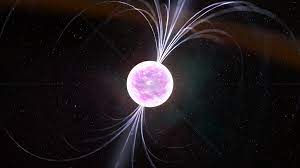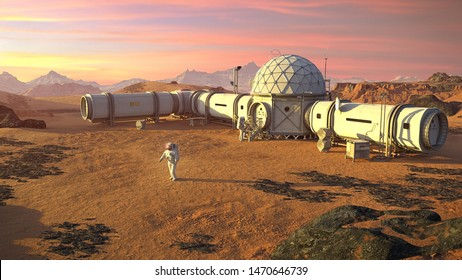Colonising the outer planets: A step too far?
- Jay Sardesai

- Dec 4, 2020
- 5 min read
Updated: Dec 6, 2020
After the Moon and Mars have been colonised, the next regions to be colonised are likely not to be planets, but moons. Mercury and Venus are not ideal candidates for colonisation: Venus has a surface temperature of 465 degrees Celsius, clouds made up partially of sulphuric acid and a pressure at the surface of 90 bar(1 bar is slightly less than the atmospheric pressure of Earth at sea level), while Mercury has no atmosphere and a 176 day-long day-night cycle, meaning that during the day the surface heats up to over 400 degrees Celsius, before cooling to -180 degrees Celsius at night. Therefore, the best candidates for colonisation are the much colder solid moons of the outer solar system.

The moons of Jupiter pose several challenges for colonisation: firstly, they are mostly located within Jupiter's radiation belts. This is the area where Jupiter's magnetosphere, far stronger than Earth's, traps radiation from the Sun. As a result, a human on the surface of one of the moons of Jupiter without adequate protection would be exposed to a fatal dose of radiation within a couple of days (the surface dose of radiation on Europa is approximately 5.4Sv/day, normally fatal to a human, even with treatment). As a result, human colonies would have to be extensively shielded, and the colonists themselves would probably not be able to leave these habitats, due to the risk of death.
However, Ganymede, unlike the other Jovian moons, possesses a strong magnetic field of its own. This magnetic field deflects Jupiter's radiation from the equator, while not protecting the poles. As a result, the surface radiation on Ganymede's equator ranges from 50-80mSv/day, enough to cause radiation poisoning over a period of a couple of months, but much more manageable than the radiation dose on other moons.
Ganymede's crust is estimated to be composed of a mixture of rock and ice. This is useful for colonists, as water can be easily extracted, regardless of the location of the colony. This means that colonisation would not be limited to the poles, luckily in the case of Ganymede, due to the much more hospitable nature of the equator. In addition, materials for the creation of the habitats are not scarce, as the rocky part of the crust is largely composed of iron oxide and silicates, from which iron and silicon can be easily extracted. The iron can then be used to build the habitat, which is much cheaper and easier than transporting materials to Ganymede to build the colony.
The biggest challenge faced on Ganymede is the relative lack of energy sources. Solar energy cannot be used alone without the construction of orbital mirrors, as solar panels would only be 3.7% as efficient as on Earth since the intensity of solar radiation is inversely proportional to the distance from the sun. Ganymede also doesn't have any available deposits of nuclear fuel, making finding an energy source even harder.
The most reliable source of fuel is likely to be nuclear fusion (assuming that nuclear fusion reactors that release more energy than they take in have been invented by this point). The fuel for this could be obtained by the mining of Jupiter's atmosphere, which is mostly composed of hydrogen and helium, and as such has significant quantities of deuterium and helium-3, which can be used as fuel for nuclear fusion. While significantly harder, geothermal energy is also possible, as Ganymede has a liquid iron and iron sulfide core, which heats the subsurface ocean.
Europa is another potential candidate for colonisation. It possesses a subsurface ocean composed of liquid water, allowing for colonies to be set up across Europa. While the radiation that the colonists would be exposed to is lethal, they could minimise their exposure by tunnelling deep into the ice layer which makes up the crust of Europa. Due to the extreme cold, the ice is very hard, enabling the tunnels to retain their integrity. By moving the base a mere few metres below the ice, radiation could be reduced to a survivable amount, and if moved significantly further down, long-term survival would also be possible.
A significant challenge for colonists is the low-gravity environment: Ganymede has a surface gravity of 0.14g, and Europa's is even lower at 0.13g. As a result, even with several hours of exercise a day, the colonists would slowly lose bone density and muscle mass. The effects would be much more severe on those born on the Jovian moons. It is not known if a foetus conceived in space would even survive to birth, but it would at the very least be born with severe bone problems. The child would probably grow taller than on Earth, and be much weaker. The loss of muscle mass could also lead to cardiovascular problems later in life. Potentially one of the most severe problems, however, would be the inability of the person to orient themselves when back on Earth (this should be less of a problem if born on a satellite such as Ganymede with some significant gravity, but still may occur). This effect was observed in jellyfish, raised on the ISS in zero-g, and then brought back to Earth.
Callisto is also a sensible candidate for colonisation. It bears a resemblance to Ganymede, when considering gravity, size and crust composition. Even better, it is located far enough away from Jupiter that radiation levels are deemed mostly safe for unshielded humans (even lower than Ganymede's surface radiation). Apart from these three, the moons of Jupiter are not generally good colonisation candidates. The only other large Jovian moon, Io, is very volcanically active due to tidal heating, and also is very radioactive. The other moons are just not large enough, and also are exposed to high levels of radiation. Enceladus, a moon of Saturn, is promising, with a composition similar to that of Ganymede, but with the added benefit of pockets of liquid water tens of metres below the ice.
Titan, the largest moon of Jupiter is also a serious contender for colonisation. It has a high atmospheric density, unlike almost every other potential colonisation candidate discussed, and vast reserves of methane and ethane. Unfortunately, these can't actually be burned at the surface, due to the lack of oxygen, but some hydrocarbons can be processed for polymerisation and the creation of plastics, which could be used to build habitats.
Overall, while all of these moons are possible contenders for colonisation, the most viable currently is probably Ganymede, due to its abundance of water, iron, and silicon, potential for geothermal power and proximity to Jupiter relative to Callisto. However, Callisto is also a very good option, and in time, if humans choose to colonise the outer solar system, it is likely that all of these six moons will be colonised.
Sources:



Comments